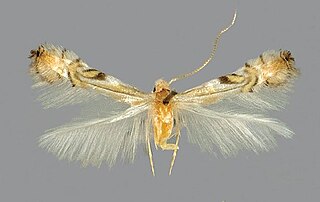| Apheloceros | |
|---|---|
| Scientific classification | |
| Kingdom: | |
| Phylum: | |
| Class: | |
| Order: | |
| Family: | |
| Subfamily: | |
| Genus: | Apheloceros Turner, 1947 |
| Species: | A. dasciodes |
| Binomial name | |
| Apheloceros dasciodes Turner, 1947 | |
Apheloceros is a monotypic moth genus in the family Geometridae. Its single species, Apheloceros dasciodes, is found in Australia. Both the species and genus were first described by Alfred Jefferis Turner in 1947. [1]

Moths comprise a group of insects related to butterflies, belonging to the order Lepidoptera. Most lepidopterans are moths, and there are thought to be approximately 160,000 species of moth, many of which have yet to be described. Most species of moth are nocturnal, but there are also crepuscular and diurnal species.
A species description is a formal description of a newly discovered species, usually in the form of a scientific paper. Its purpose is to give a clear description of a new species of organism and explain how it differs from species which have been described previously or are related. The species description often contains photographs or other illustrations of the type material and states in which museums it has been deposited. The publication in which the species is described gives the new species a formal scientific name. Some 1.9 million species have been identified and described, out of some 8.7 million that may actually exist. Millions more have become extinct.

Alfred Jefferis Turner was a pediatrician and noted amateur entomologist. He was the son of missionary Frederick Storrs-Turner. He introduced the use of diphtheria antitoxin to Australia in 1895. He was known by the nickname "Gentle Annie".







